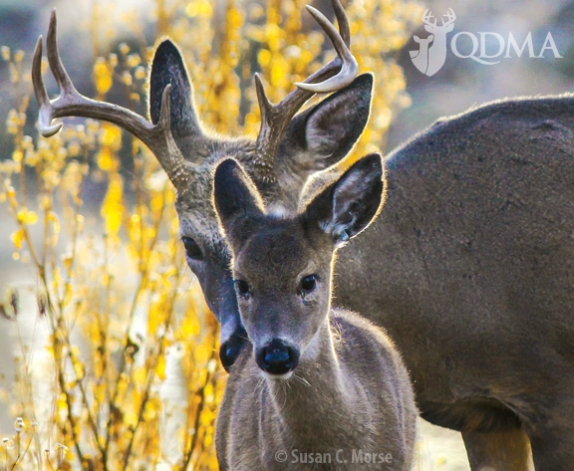If you thrill at the insane action of bucks chasing does and think that you have to wait until next November to see it again, take another look. In Maryland, for instance, the DNR estimates that 40% of yearling does breed in their first year. Additionally, these young females are not mature enough to breed during the first rut and when one comes into estrous, it triggers the second rut in December and January. Aside from a great hunting benefit, this occurrence is a sign that the herd is in good health, as explained in this QDMA post.

Some doe fawns breed and conceive in their first fall, at around six to eight months of age. The percentage that do this is determined by nutrition – they attain sexual maturity if they reach a specific weight threshold. In general, southern fawns reach it at approximately 70 pounds and northern fawns at approximately 80 pounds live weight. Fawns that manage to hit this threshold in their first fall tend to do so late, in December or January, and they are one reason for an apparent “second” rut in many areas.
Since the percentage of doe fawns that breed is based on weight, not necessarily age, it is a good indicator of herd health, and you can monitor this index by checking the lactation status of any yearling does that are harvested. If you kill a doe this fall that is 1½ years old by the jawbone and has milk in its udder, it was bred as a fawn… [continued]
Tell us what you think in the comments section below.



















![The Best Deer Camp Chili [VIDEO] Deer Chili Ingredients, Tomatoes, Chili Spices](/wp-content/uploads/2015/10/Deer-Chili-Deer-Camp-Recipe-218x150.jpg)
![How to Call Elk Early in the Season [VIDEO]](/wp-content/uploads/2016/08/byers003-218x150.jpg)




![Idiots Disturb Hunter: How Would You Have Handled It? [VIDEO]](/wp-content/uploads/2015/10/DSC00110-e1474487693878-100x70.jpg)
![Albino Buck Shocked to Shed His Antlers [VIDEO]](/wp-content/uploads/2015/10/AlbinoDeer-100x70.jpg)